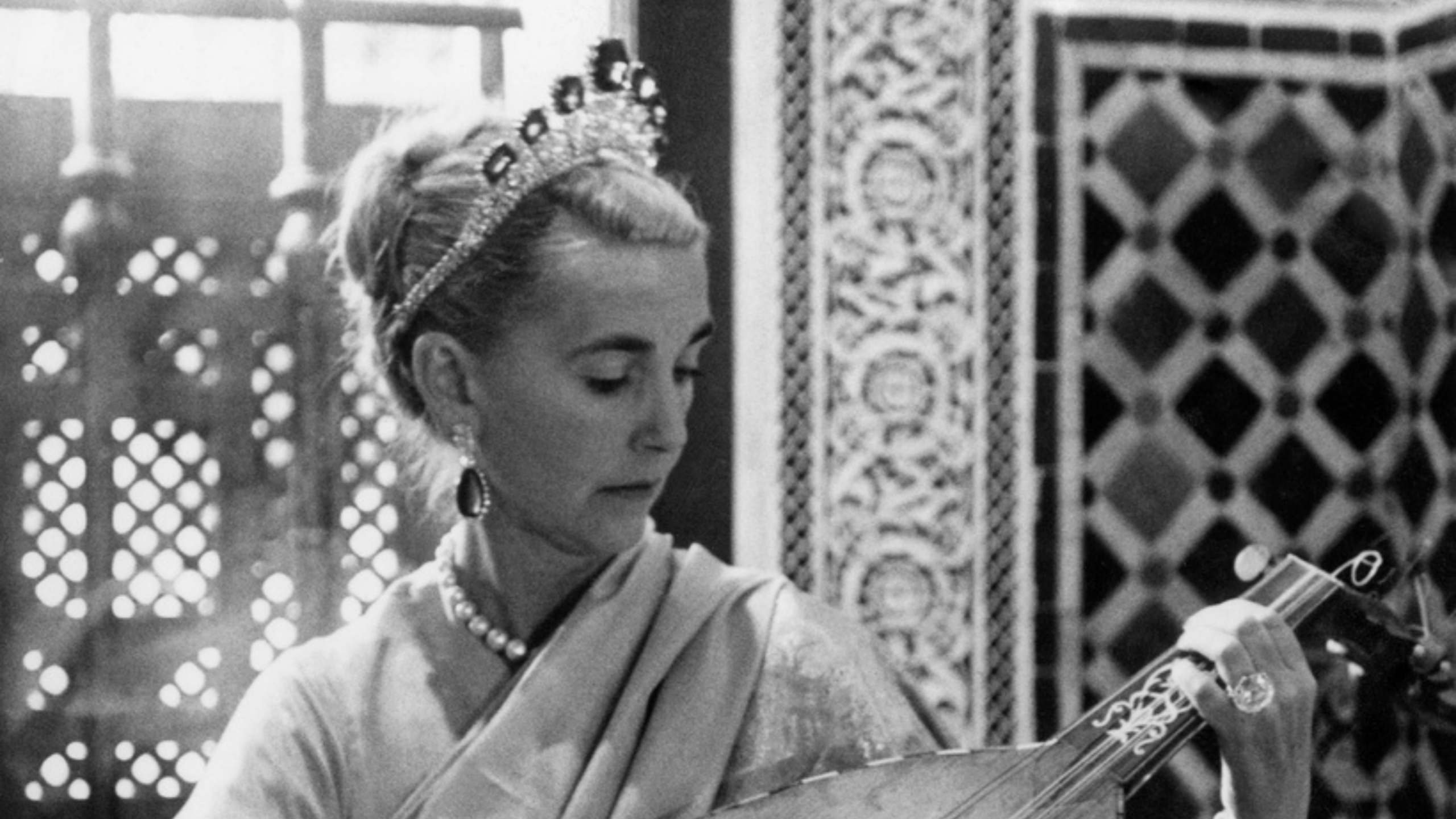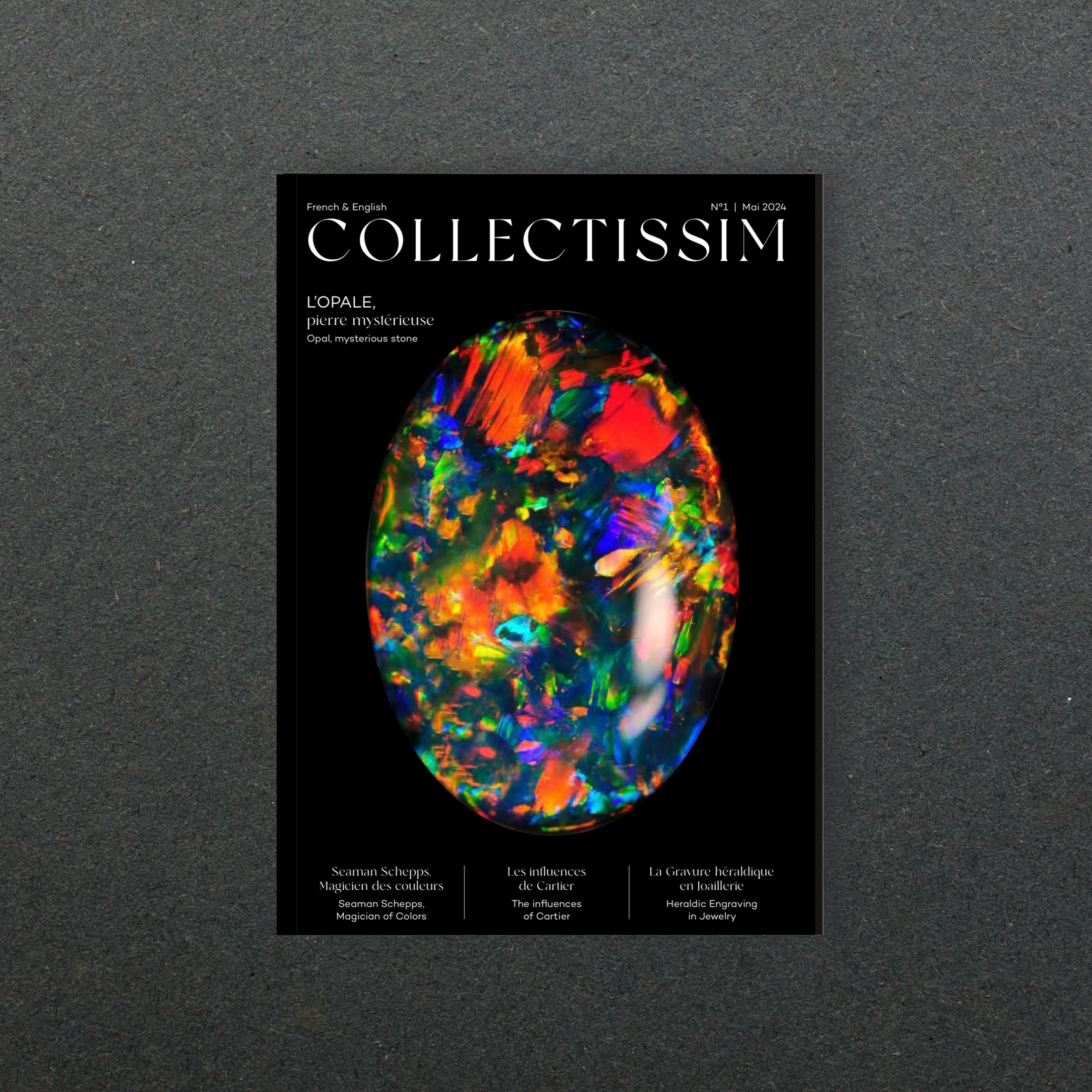A true icon of the 20th century, Barbara Hutton, nicknamed the “Million Dollar Baby”, became famous not only for her colossal fortune but also for her spectacular jewelry collection. Her finery, testimony to a lavish lifestyle, continues to fascinate history buffs and jewelry lovers alike. Barbara Hutton has always nurtured a fascination for jewels steeped in history. Her taste for rare and precious pieces, often associated with royal figures or significant events, reflects her desire to interweave her own destiny with that of the great stories of the past. In this article, discover a selection of eight pieces of jewelry that belonged to the “Million Dollar Baby”.
Barbara Hutton : the Poor Little Rich Girl
Born in 1912, Barbara Hutton grew up in a world of opulence; her maternal grandfather, Frank W. Woolworth, had founded the famous Woolworth’s chain of stores, a veritable retail institution of the XXᵉ century. On her father’s side, her father, Franklyn Laws Hutton, was a successful banker, co-founder of the influential EF Hutton company. In addition, Barbara was the niece of General Foods heiress Marjorie Merriweather Post (who was a great jewelry collector too) and cousin of Dina Merrill, one of the wealthiest women of her time. But her childhood was overshadowed by a family tragedy. At just six years of age, she discovered the lifeless body of her mother, Edna, in what is generally regarded as a suicide. This trauma left a deep impression on young Barbara, who was subsequently entrusted to various members of her family, despite the Woolworths’ immense wealth.
For her 18th birthday, in the midst of the Great Depression, a sumptuous party was organized in her honor, costing the equivalent of a million dollars today. This display of luxury provoked widespread indignation and attracted intense media attention. This event marked the beginning of a tumultuous relationship between Barbara and the press, who from then on followed her every move.

At the age of 21, Barbara Hutton inherited nearly $50 million, a colossal sum equivalent to $898 million today. Contrary to the entrepreneurial spirit of her grandfather Frank Woolworth, she spent her money without restraint, living a life of extravagance. Barbara afforded the most beautiful homes, the most luxurious clothes, yet what she seemed desperate for – love and stability – always eluded her wallet. Married and divorced seven times, she hoped to fill a deep emotional void with each union. Her husbands included a baron, three princes, a count, the actor Cary Grant and an international playboy. Most of these men took advantage of her fortune, spending lavishly before walking away with millions of dollars upon divorce. Her marriage to Cary Grant, marked by excessive spending, earned them the nickname “Cash and Cary”. This unbridled pursuit of happiness, punctuated by failed marriages and reckless spending, eventually fueled public indignation and fascination.

Barbara was out of touch with the economic and social realities that had enabled her family to build such a fortune. Her ostentatious lifestyle tarnished the image of the Woolworth chain, to the point of provoking boycotts and strikes. Plunged into a self-destructive spiral of drugs and alcohol, Barbara squandered the last vestiges of her fortune to curry favor with others. In the end, she had to sell her properties and prized possessions to survive. When she died at 66, she had only $3,500.

Barbara Hutton: a passion for jewelry
Barbara Hutton, despite her tumultuous marriages, divorces and extravagant spending, found a certain refuge in her passion for jewelry and historical pieces. More than mere ornaments, these treasures reflected her desire for beauty and her quest for identity, while affirming her social status and power. Among the emblematic pieces in her collection are a pearl necklace that once belonged to Marie-Antoinette and a sumptuous jade necklace. These jewels, sold at auction after her death, continue to fascinate, bearing witness to a life that was both opulent and tormented.
1. The “Pasha of Egypt” diamond ring of Barbara Hutton
This 40-carat octagonal diamond takes its name from Ibrahim Pasha, Viceroy of Egypt under the Ottoman Empire, who acquired it for the impressive sum of £28,000. Considered the finest jewel in the Egyptian treasury in Ibrahim Pasha’s time, it symbolized the pomp and power of Ottoman Egypt. After Ibrahim, the diamond went through a period of upheaval under Ismaïl Pacha, who ascended the throne in 1863. Despite an era of economic modernization, Ismaïl accumulated a colossal debt of £100 million. Forced into exile in 1879 after being deposed by the Ottoman sultan, he took with him a large number of treasures, including, according to legend, the “Pasha of Egypt”. It was in 1933 that the “Pasha of Egypt” resurfaced, offered by London-based T.M. Sutton to Cartier, one of the leading jewelers of the day. Shortly afterwards, the diamond returned to Egypt, acquired by King Farouk. However, the sovereign soon disposed of it, and the gem passed into the hands of the famous Italian jeweler Bulgari, who eventually sold it to Barbara Hutton.

2. The famous emerald tiara of Barbara Hutton
This tiara, designed by Lucien Lachassagne for Cartier, is distinguished by its dual functionality, as it can also be worn as a necklace. The emeralds of which it is composed have a prestigious historical provenance, as they once belonged to Maria Pavlovna of Russia, wife of Grand Duke Vladimir Alexandrovitch of Russia. After the fall of Imperial Russia, Maria fled first to Siberia, then to France via Venice. In 1920, she became the last member of Russian royalty to leave the country. Before her departure, her jewels were discreetly removed from the Vladimir Palace and returned to her in exile.
In 1920, after the Grand Duchess’s death, the stones were inherited by her son, Grand Duke Boris Vladimirovitch, who sold them to Cartier. In the 1930s, the emeralds became part of a new necklace sold to Edith Rockefeller McCormick, before being bought again by Cartier in 1932. In 1936, Barbara Hutton acquired the emeralds and wore them first as a ring, necklace and earrings, before having them set in this iconic tiara.




Barbara Hutton in her Tangier's palace ©Cecil Beaton
A closer look on the emerald tiara ©Cecil Beaton
Barbara Hutton in her Tangier's palace ©Cecil Beaton
A closer look on the emerald tiara ©Cecil Beaton
Barbara Hutton in her Tangier's palace ©Cecil Beaton
A closer look on the emerald tiara ©Cecil Beaton
3. Marie-Antoinette's pearl necklace
This pearl necklace belonging to Marie-Antoinette is a piece shrouded in mystery. Passed down through royal generations, it is said to have belonged initially to Anne of Austria, wife of Louis XIII, before being inherited by Maria Theresa of Spain, then Maria Leszczynska, and finally Marie-Antoinette. The circumstances surrounding the necklace’s disappearance after the French Revolution remain uncertain. It could have been entrusted by Marie-Antoinette to relatives before her imprisonment, stolen during the looting of the Garde-Meuble in 1792, or later sold at the Crown Jewels auction in 1887. These sales, orchestrated under the Third Republic, enabled houses such as Tiffany & Co. of New York to acquire iconic pieces. The necklace may have followed a similar path, joining the private collections of figures such as Barbara Hutton.

4. The jade necklace
Barbara Hutton’s jade necklace, given by her father on the occasion of her marriage to Prince Alexis Mdivani in 1933, embodies timeless elegance and a fascination for the treasures of the Orient. Composed of 27 perfectly sculpted jadeite pearls, probably cut in the 18th century, this exceptional jewel was originally embellished with a Cartier clasp set with a navette diamond. A year later, Barbara had this clasp replaced by a yellow gold version adorned with calibrated rubies and baguette diamonds, again by Cartier. In 2014, the necklace sold for $27.44 million at Sotheby’s, making it the world’s most expensive piece of jade jewelry.



The necklace was sold for $27.44 million at the "Magnificent jewels & jadeite" sale by Sotheby's
A closer look on the jade necklace clasp set with rubies and diamonds
Barbara Hutton and the jade necklace
The necklace was sold for $27.44 million at the "Magnificent jewels & jadeite" sale by Sotheby's
A closer look on the jade necklace clasp set with rubies and diamonds
Barbara Hutton and the jade necklace
The necklace was sold for $27.44 million at the "Magnificent jewels & jadeite" sale by Sotheby's
5 & 6. Bracelet and brooch by Van Cleef & Arpels
Two interesting pieces of jewelry by Van Cleef & Arpels, including a “Ludo” bracelet in platinum and diamonds and a “Winged Fairy” clip in platinum, rubies, emeralds and diamonds for Countess Haugwitz-Reventlow, better known as Barbara Hutton.



Small winged fairy clip, 1941, Platinum, rubies, emeralds, diamonds, in the former collection of countess Haugwitz-Reventlow, better known as Barbara Hutton ©Van Cleef & Arpels Collection
Drawing featuring the small winged fairy clip & product card of the Ludo bracelet ©Van Cleef & Arpels Collection
Ludo bricks bracelet, 1935, Platinum, diamonds, in the former collection of the Countess Haugwitz-Reventlow, better known as Barbara Hutton ©Van Cleef & Arpels Collection
Small winged fairy clip, 1941, Platinum, rubies, emeralds, diamonds, in the former collection of countess Haugwitz-Reventlow, better known as Barbara Hutton ©Van Cleef & Arpels Collection
Drawing featuring the small winged fairy clip & product card of the Ludo bracelet ©Van Cleef & Arpels Collection
Ludo bricks bracelet, 1935, Platinum, diamonds, in the former collection of the Countess Haugwitz-Reventlow, better known as Barbara Hutton ©Van Cleef & Arpels Collection
Small winged fairy clip, 1941, Platinum, rubies, emeralds, diamonds, in the former collection of countess Haugwitz-Reventlow, better known as Barbara Hutton ©Van Cleef & Arpels Collection
7. Crystal and diamond ring by Cartier
In 1935, while staying in Egypt near the majestic Pyramids of Giza, Barbara Hutton gave an exceptional gift to her Swedish physiotherapist, Karin Gustafson. The jewel, a Cartier ring cut from a single rock crystal and crowned with a platinum setting set with diamonds, dates from the 1920s-1930s. This piece is a testament not only to Barbara Hutton’s taste, but also to her generosity, a quality often highlighted by those who knew her.
8. Papyrus” ruby necklace
Barbara Hutton’s ruby and diamond necklace, often referred to as the “papyrus necklace”, has pride of place. Discovered at a private exhibition organized by Van Cleef & Arpels in Geneva, the necklace resurfaced in a Van Cleef & Arpels box, brought by an anonymous owner. It was a revelation. It is often attributed to an anonymous jeweler of the 1940s, with modifications made by Van Cleef & Arpels in the 1970s. However, the history of the necklace is far more complex. The original, made by Chaumet in the 1910s, was designed for Barbara Hutton’s mother. A persistent rumor has it that it previously belonged to Queen Amélie of Portugal. However, there is no documentary evidence – neither photographs nor inventories – to confirm this provenance. What we do know is that Barbara Hutton wore it frequently in the 1930s, before it was completely redesigned during the Second World War. In 1940, a letter from Louis Arpels in the Van Cleef & Arpels archives in Geneva reveals the details of this transformation: “Barbara wishes to have her rubies mounted in a new yellow gold frame.” This special order was carried out by the company’s American workshop.



Ruby "Papyrus" necklace
Ruby "Papyrus" necklace
Ruby "Papyrus" necklace
Ruby "Papyrus" necklace
Ruby "Papyrus" necklace
Ruby "Papyrus" necklace













